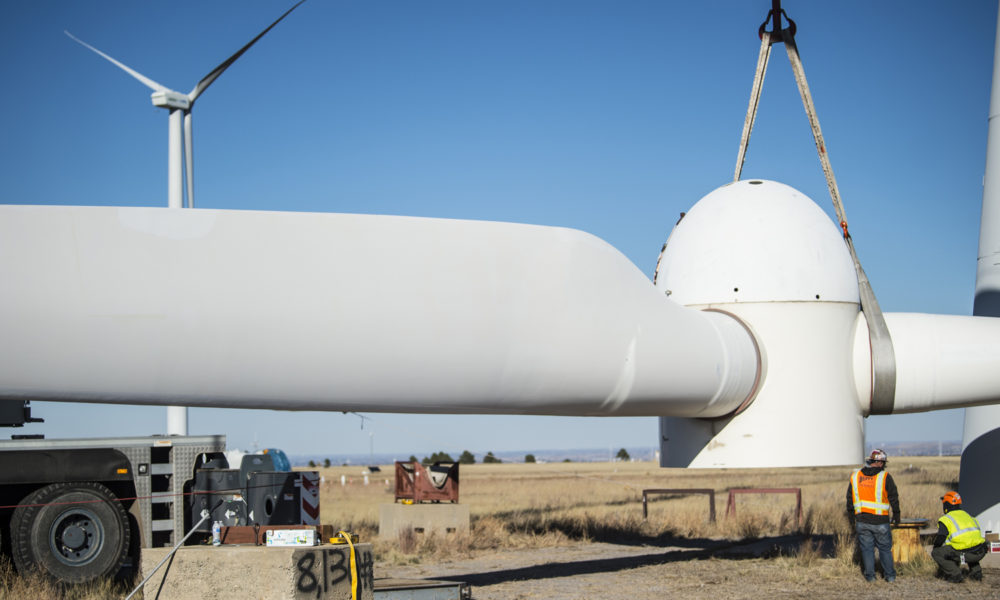To limit the severity of climate impacts to come, we need ambitious climate goals—and we need ambitious climate actions to match.
Right now, we’re long on vision but short on action, leaving us sickeningly clear-eyed about the costs and consequences of our steady stumbling failure to bridge the two.
One place this divergence couldn’t be clearer is the power sector.
Quickly cleaning up the power sector is a non-negotiable part of any viable national climate action plan. Full stop.
But with 60 percent of our electricity generation still coming from polluting fossil fuels, we don’t have a cleaned-up grid. More importantly: we don’t have a national, actionable, enforceable clean-up plan.
This despite a recently affirmed national commitment to climate action;
This despite the ready calculations of the level and rate of economywide decarbonization that commitment requires;
This despite the targets and timelines for essential power sector decarbonization that necessarily follow from there;
And this despite the fact that despite all that, the actual transition is occurring at a pace entirely incongruous with what those targets and timelines demand.
We cannot afford to continue sleepwalking toward the climate crisis cliff, blithely waving to bold clean energy visions with one hand while greenlighting inconceivably out-of-step polluting, inequitably health-harming fossil fuel investments with the other.
Step up, Congress. We know what we need for the power sector: renewables racing online, driving 80 percent emissions reductions below 2005 levels by 2030 on the path to 100 percent reductions soon thereafter.
It’s time to tether rhetoric to reality and establish enforceable power sector targets critical to achieving broader climate plans.
We are not on the path
Clean energy momentum has been building in this country for over a decade now; the rate of renewables deployment, the precipitous decline in clean energy costs, the surging uptake in rooftop solar, the previously unthinkable rate of coal plant retirements, the coalescing around the central role of clean energy in the transition ahead – it’s all there, and it’s all inspiring.
And it’s nowhere near enough.
We are miles away from where we need to be, and yet just feet before the finish line. We will not get to where we need to go if we fail to bridge that gap.
Many things can help: state and local action, corporate clean energy investments, tax incentives, EPA standards, loans, research and development—the list goes on and on.
But the intransigence of fossil fuel interests; the looming, lingering debts of stunningly recent head-in-the-sand approvals to build fossil fuel plants; the steady-ahead complacency of far too many long-unchallenged monopolies—these won’t be overcome in time without a major push.
Enforceable targets and standards are the only certainty that focuses the action, backstops the intention, ensures we get on a viable climate path, ensures we stay on a viable climate course.
The transformative power of enforceable targets
Dozens of states have embraced the policy lever of power sector targets for decades now, primarily in the form of renewable electricity standards, and, more recently, as clean energy standards. It’s simple in concept and successful in practice: set steadily strengthening targets for the electricity mix, match those targets to timelines, and watch a utility deliver.
And indeed, we’ve seen from states with clean energy commitments how entirely and incredibly transformative those commitments can be. Because when the target is on the table and the timeline is in view, there is no getting around which investments are compatible, and which investments aren’t—and with the aperture widened, clean-energy economic development has thrived, routinely bringing stronger targets into place. What’s more, these targets and timelines help make clear where gaps could emerge and where future accelerants might be needed, and thus can guide complementary policies accordingly, all the way from detailing necessary transmission buildouts and prioritizing retirement of heavily polluting fossil fuel plants to boosting access to rooftop solar and driving targeted efficiency investments.
But we don’t have such standards in all states, and even in the states where we do, many are out of step with the pace of transition demanded and some polluters are omitted from coverage.
At best, we are witnessing the far-too-slow turnover of polluting, health-harming power plants to clean; at worst, we are standing idly by as utility investments—of ratepayer money—continue pouring in for costly gas plants again, and again, and again.
A national-level plan would fix that, with consistent, transparent, enforceable targets and timelines that ensure we are all pulling in the same direction, contributing to and benefitting from clean energy investments taking place, on pace.
A chance to get it right
On the campaign trail, and repeatedly once in office, President Biden made clear that he understood this point in his continued commitment to transitioning the power sector away from fossil fuels. This was again reflected with the inclusion of a clean electricity standard in the American Jobs Plan, targeting 100 percent carbon-free power by 2035, and remains critical to actually achieving the bold 2030 economy-wide emissions reduction commitment President Biden recently made in service of the Paris Agreement.
Congress has an obligation to turn this commitment into a reality, and enforceable clean energy targets are a critical part of that task. And now it has the chance: as infrastructure discussions continue on the Hill, clean energy targets must be part of the ask.
The climate math paints the facts and we can all see we’re not on track. Why the reticence of policymakers to actually commit to that which they proclaim is necessary? Why the timidity? Why the repeated failure to act? Fossil fuel pollution is killing people; clean energy is reliable, cost-competitive, and popular; and the fate of the future is at hand.
Set the targets, set the timelines, put necessary guardrails around which resources qualify to ensure we get the right resources coming online, and get us back on track: 80 percent below 2005 levels by 2030, on the path to 100 percent reductions soon thereafter.
Of course, the framework is only the start. Additional policies are vital to getting the clean energy transition right, to getting the clean energy transition supported, to seeing the full scale and scope of clean energy potential all the way through. And so, policymakers will still need to build, build, build: targeted policies to prioritize the removal of noxious emitters in overburdened communities; financial incentives to lessen the immediate outlays of rapid clean energy deployment; transition assistance for retiring fossil fuel assets and supporting workers and communities; rooftop solar and energy efficiency and electrification initiatives equitably deployed and dialed up to 11; market reforms and transmission facilitation; grid resilience; legacy pollution remediation; loans and grants and research and storage and build, build, build.
But don’t lose sight of where it all must start: enforceable targets and timelines that link goals to action, setting the framework for the forward course.

